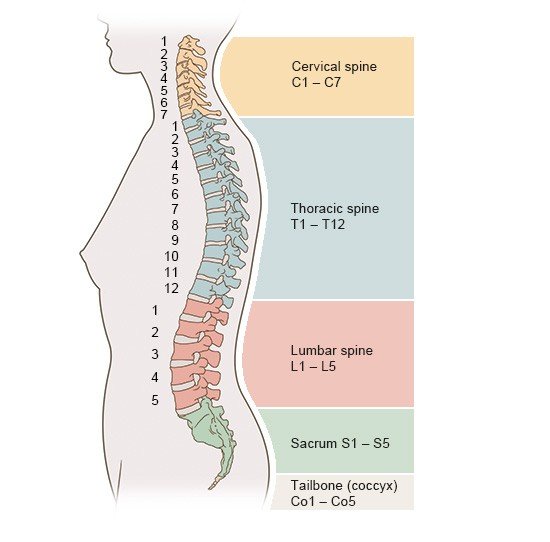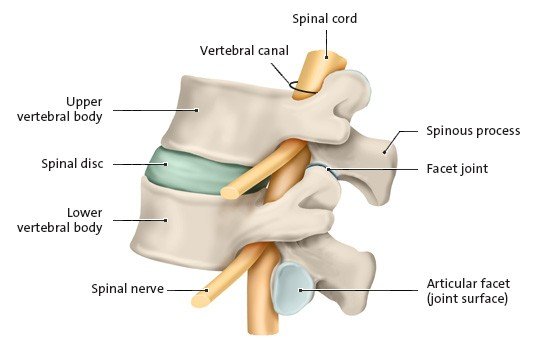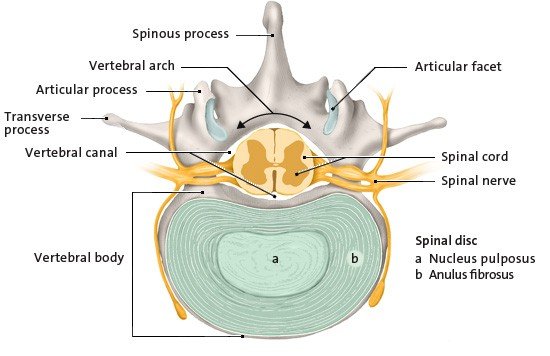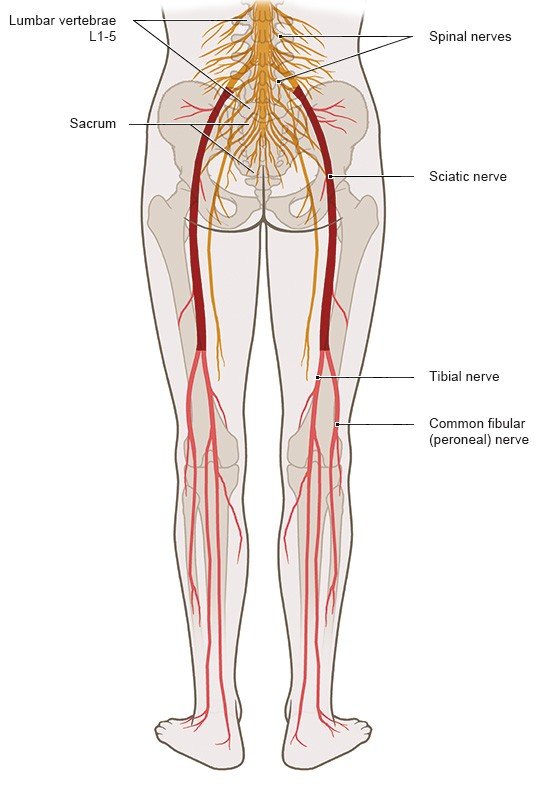The parts of the spine
The individual bones in the spine are called vertebrae. Adults typically have 33 vertebrae. They are divided into five areas (from top to bottom):
- Cervical spine (7 vertebrae)
- Thoracic spine (12 vertebrae)
- Lumbar spine (5 vertebrae)
- Sacrum (5 fused vertebrae)
- Tailbone, or coccyx (4 fused vertebrae)
Doctors have numbered the vertebrae in each region from top to bottom together with one or two letters standing for each part: Cervical vertebrae are given the letter "C," thoracic vertebrae the letters "Th," and lumbar vertebrae the letter "L," for example. Each region is then numbered from top to bottom, e.g. with C1 to C7 for the cervical vertebrae and so on.
Some regions of the spine are more flexible than others. The cervical spine is the most flexible. It allows us to turn and tilt our head in nearly every direction. The sacrum and tailbone can't be moved, and are made up of only bone in adults. Children still have separate vertebrae making up the sacrum and tailbone, which then gradually grow together.
The lower down the vertebrae are in the spine, the more weight they have to carry. For that reason, the lumbar vertebrae are larger and more stable than vertebrae near the top of the spinal column, for instance. Because of this greater load, normal wear and tear commonly develops here as we age.




